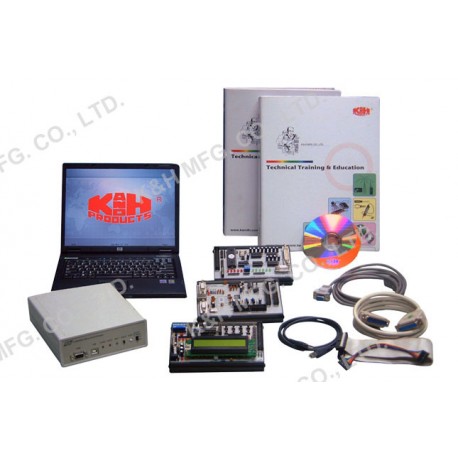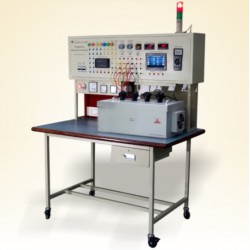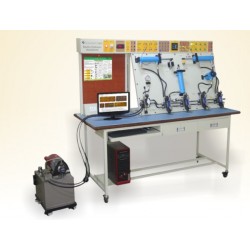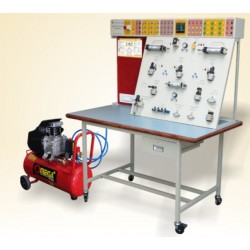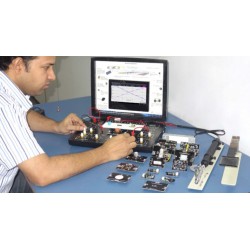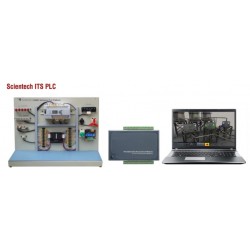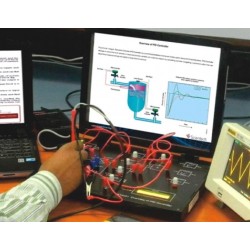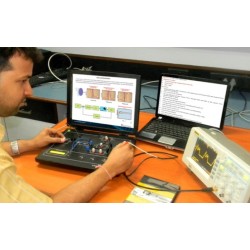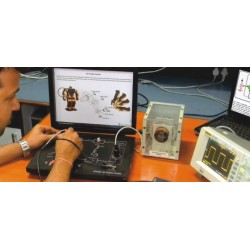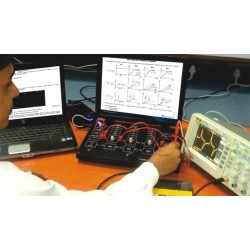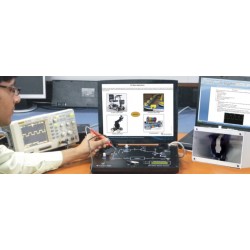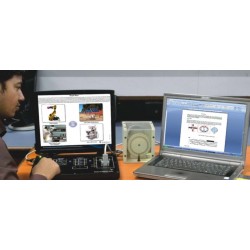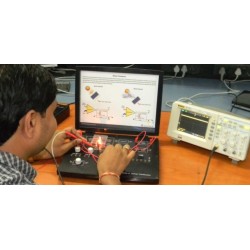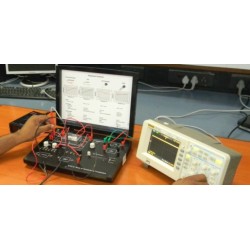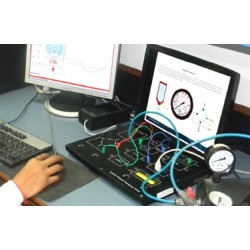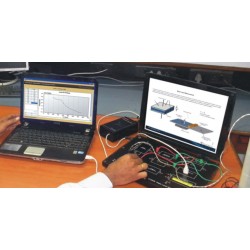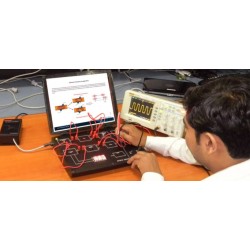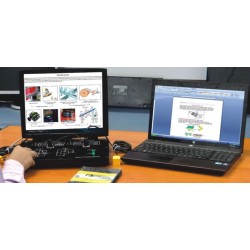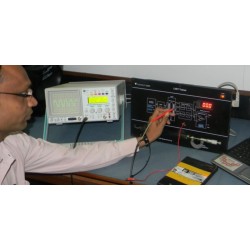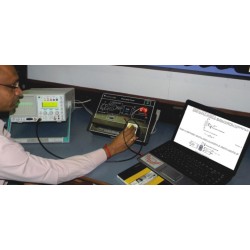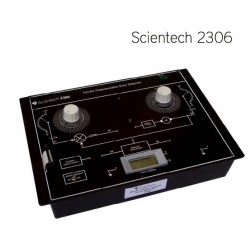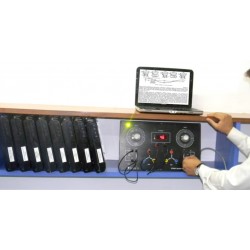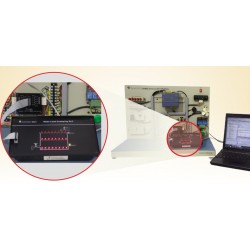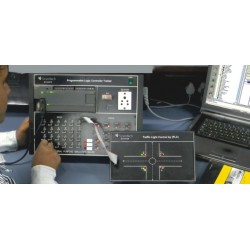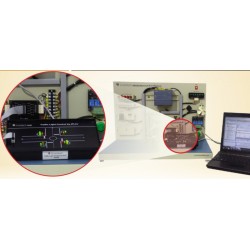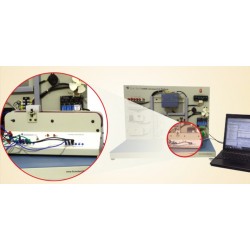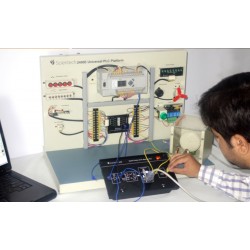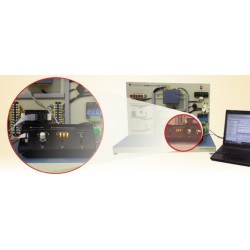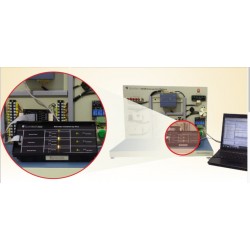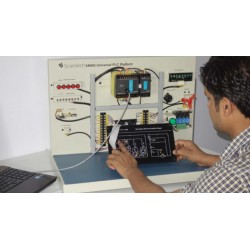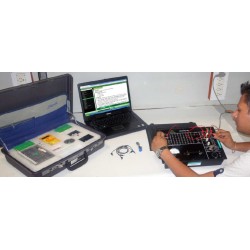No products
Prices are tax excluded
Product successfully added to your shopping cart
There are 0 items in your cart. There is 1 item in your cart.
CIC-800A Interface Lab
CIC-800A
New
An interface is a hardware and software data transmission regulator that controls data exchange between the PC and other peripheral devices, including RS-232C, AT-BUS, IDE, SCSI, ISA, PCI, AGP, IrDA, GPIB, USB, IEEE-1394, Wireless etc...
- Consulta este producto
- Remove this product from my favorite's list.
- Add this product to my list of favorites.
| Category | Laboratories |
Each interface device inherits different specifications such as transmission rate, data format, protocol and applications. Accordingly, learners can familiarize themselves with each kind of interface devices.
CIC-800A contains multi-purpose interfaces modules, inclusive of serial port (RS-232C), parallel port (Centronics) and universal serial bus (USB2.0) that can be used for various peripheral devices. Add-on modules are available for experiment purpose. The RS-232C and centronics interface firmware adopt Atmel's chipset modules, and use Microsoft visual C++ 6.0 as developing tools.
The USB 2.0 interface firmware adopts cypress's chipset modules, and uses Microsoft visual C++ 6.0 as developing tools. By learning traditional and popular interfaces, users can reap the benefits. Additionally, we also provide source codes and execution files for further studying.
Containing protocols of USB 2.0, RS-232C, and Centronics
1. USB Interface
(1) Comply with high speed USB 2.0 specification
(2) Support four transfer types: Isochronous, bulk, control, interrupt
(3) Provide debugging and development environment-Keil C compiler
(4) Directly download firmware via USB interface for supporting software operation and eliminating the requirements of external program memory or mask ROM
(5) Support ReNumeration operation to build a predestined endpoint
(6) Use cypress USB microcontroller CY7C68013-100AC TQFP, compatible with 8051
(7) Operate in stand-alone mode after the application program Iis download (with external power supply)
(8) Provide 8051 40-pin expansion connector for simulating 8051 I/O ports P0, P1 and P2
(9) Provide two UART serial ports (one for Keil C debugger)
(10) Provide 3.3V I/O interface
2. RS-232C and Centronics Interfaces
The microcontroller AVR8515 features:
(1) Program memory : 4K x 16 = 8K x 8 of In-System
Programmable (ISP) flash, 1000 write / erase times
(2) 512 bytes of In-System Programmable EEPROM,100000 write / erase times
(3) 32 tri-state programmable I/O lines (PA0-PA7, PB0-PB7, PC0-PC7, PD0-PD7)
(4) 32 x 8 general purpose working registers
(5) 512 bytes of SRAM
(6) 2.7 to 6.0 V operating voltages, 0 to 20 MHz fully static operating frequencies
(7) 50 ns instruction cycle at 20 MHz
(8) One 8-bit timer/counter with separate prescaler
(9) One 16-bit timer / counter with separate prescaler, compare / capture modes
(10) One full duplex UART port
(11) Dual 8-, 9- or 10-bit PWM output
(12) Internal and external interrupt sources
(13) Programmable watchdog timer with on-chip oscillator
(14) On-chip analog comparator
(15) Low-power idle and power down modes
(16) Programming lock for flash program and EEPROM data security
(17) Large I/O drive current-sink 20mA (max 40mA) and source 10mA at 5V
(18) Master / slave SPI serial interface
(19) 64K bytes of external SRAM
(20) Program memory can be reprogrammed by ISP loader through SPI serial port
• USB experiments
(1) LED display control
(2) 7-segment display control
(3) Tact switch control
(4) LCM display
(5) ADC
(6) DAC
(7) UART
(8) USB keyboard
(9) USB mouse
• RS-232C / Centronics experiments
(1) Centronics experiments
a. Digital output
- Data-line output
- Control-line output
b. Digital input
- Status-line input
- Data-line output
(2) RS-232C experiments
a. Digital input and output
- Control-line output
- Light flash control
- Status-line input
b. Data transfer
- Sending and receiving data
- Automatically receiving data
- Applications of data transfer
- LED controlled by TXD data output
- RXD receiving data
- Synchronously sending and receiving data
- DIP switch data receiving
- Keypad data receiving
- DAC application - data output
- Digital voltmeter using ADC data input
- Waveform display using ADC data input
- Binary data sending and receiving (associated with 7-segment display
and keypad)
- ASCII character code sending and receiving (associated with 20 x 2
character LCD)
- Character string sending and receiving (associated with 20 x 2
character LCD)
- Changes of baud rates

